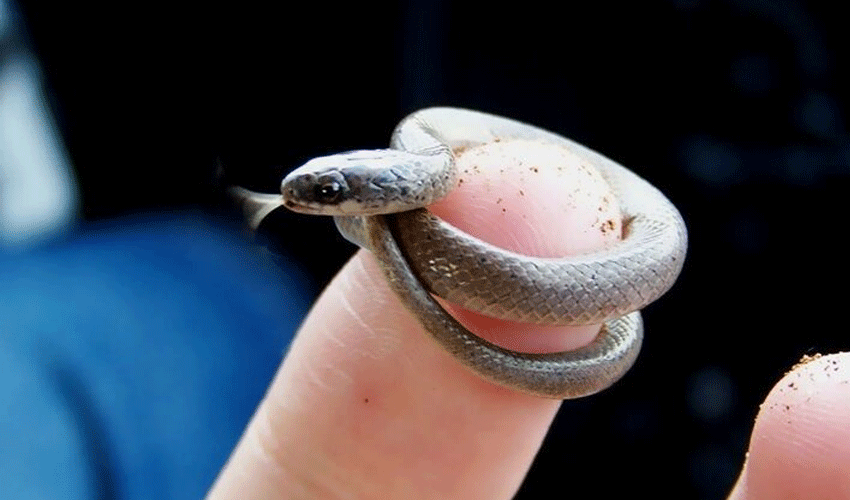An Unexpected Discovery in the Heart of the Forest
The elusive reptile was uncovered during a routine biodiversity survey conducted in March this year by Connor Blades of the Barbados Ministry of Environment and Justin Springer of the global conservation organisation Re:wild. Their discovery has brought new optimism for the survival of this critically rare species.
A Creature Smaller Than Spaghetti
The Barbados threadsnake holds the title of the world’s smallest known snake species, reaching just 10 centimetres in length at full maturity and no thicker than a strand of spaghetti. Its tiny body is adorned with subtle orange stripes along its back and a small, distinct scale on the snout — characteristics that distinguish it from the similarly sized Brahminy blind snake, a non-native species that has spread across many tropical regions.
Because of its size and cryptic lifestyle, the Barbados threadsnake is extremely difficult to spot. It lives underground or beneath leaf litter and rocks, making its survival dependent on very specific environmental conditions.
Verification and Release
Following its discovery, the threadsnake was transported to the University of the West Indies for close examination. Experts worked meticulously under a microscope to confirm the species, ensuring it wasn’t the invasive Brahminy blind snake. Once positively identified, the threadsnake was carefully returned to its natural habitat.
“Barbados threadsnakes are blind snakes, so they’re very cryptic,” explained Blades. “They’re also quite rare. Very few people have ever seen one.”
Springer echoed the sentiment of wonder upon seeing the snake: “You spend so long looking and you just don’t expect it anymore. Then there it is — this tiny living thing — and it takes a moment to believe it’s real.”
Barbados’s Shrinking Forest Habitat
The rediscovery has reignited concerns about deforestation on the island. Since the colonial period, Barbados has lost the vast majority of its original forest cover — with only about two percent remaining today. This has placed immense pressure on native species like the Barbados threadsnake, whose survival depends on undisturbed, dense forest undergrowth.
Compounding the problem is the snake’s unique reproductive limitation. Unlike the invasive Brahminy blind snake, which reproduces asexually and can lay multiple eggs, the Barbados threadsnake lays just one egg per clutch. This drastically slows its population growth and heightens its vulnerability to extinction.
A Wake-Up Call for Conservation
For conservationists and ecologists, the rediscovery serves as a powerful reminder of the richness still hidden in the island’s fragmented wilderness. The find may help catalyse renewed efforts to protect and restore native habitats, and perhaps inspire similar surveys aimed at locating other rare or possibly endangered species.
Springer emphasized the symbolic weight of the moment: “The threadsnake’s rediscovery is a reminder that our forests, though fragmented, still harbour secrets. They are vital not just for animals, but for our culture and future.”
As conservation groups and government agencies reflect on this surprising turn of events, attention is now turning toward expanding protective measures for the island’s few remaining patches of native forest. The hope is that the tiniest of snakes may become a powerful ambassador for preserving what remains of Barbados’s natural heritage.
Topics #Barbados threadsnake #forest conservation Barbados #snake rediscovery Barbados #trending pakistan #world’s smallest snake




